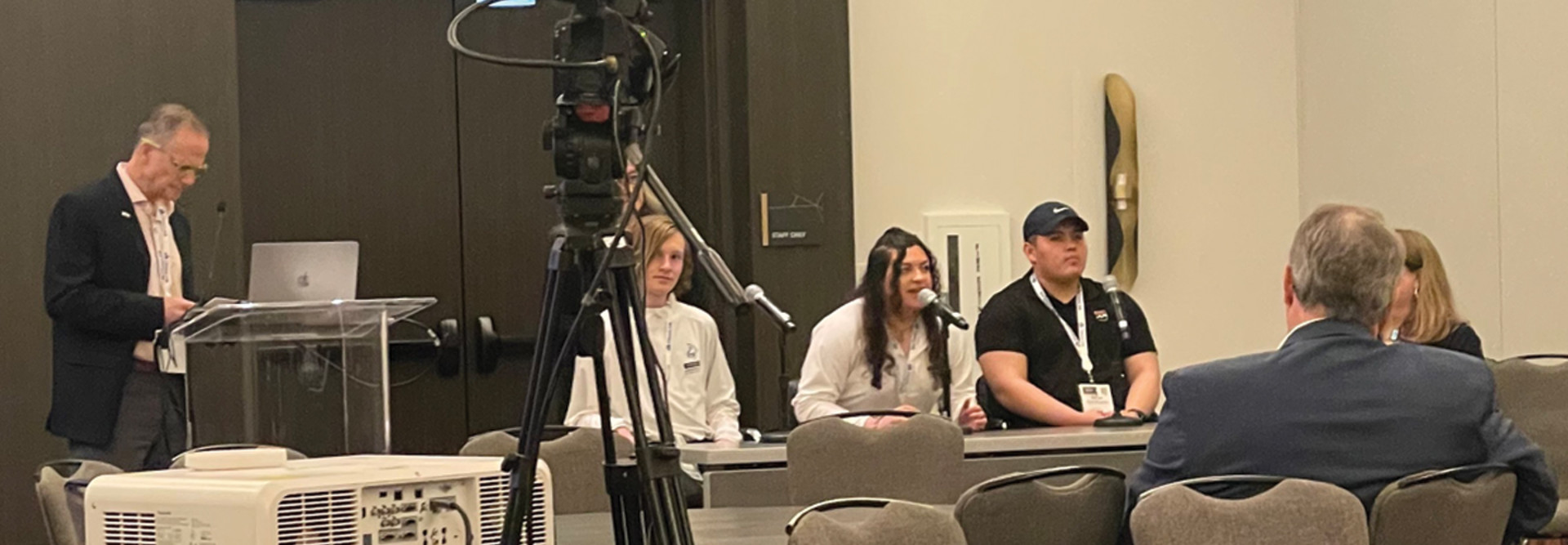Andrew Wheatley, director of secondary curriculum at Lakota Local School District in Ohio, lauded the instructors at Lakota Cyber Academy. He advised school districts not to worry about a potential instructor’s cybersecurity credentials, adding that both of Lakota Cyber Academy’s instructors were trained in cybersecurity for this role.
Two students echoed Wheatley’s praise of the instructors. “It’s a real personal drive that makes a good cyber teacher,” said Colin Klines of his instructor Ben Dougherty. “At the end of the day, he really wants to see us succeed, and that’s what makes a huge difference.”
Students Leave High School Ready for the Workforce
St. Vrain Valley School District’s session featured current and former participants in its tech programs. The Colorado school was the first to offer P-TECH west of the Mississippi, said Michelle Bourgeois, the district’s CTO. Students also may spend summers working for District Technology Services, where they can learn support, networking, InfoSec and DevOps from the school’s network professionals.
Students from both schools shared the benefits of the training they received, noting that it allowed them not only to learn desirable skills but also to develop an understanding of the professional world.
WATCH NOW: Immersive technologies help students explore careers.
At his internship with Standex, Lakota Cyber Academy’s George Kolks helps patch and encrypt machines, but he also shares cybersecurity advice. “Part of my job is to reach out to people around the world. I’m reaching out to people in Japan, Portugal, Turkey and places like that,” Kolks said. “It’s been a huge help for my soft skills.”
Sienna Arellano, a student designer on St. Vrain Valley School District’s cybersecurity team, also said that her high school’s program has benefitted her soft skills. She and some of her peers worked with senior citizens to improve their knowledge of cybersecurity.
“Through that, I’ve learned how to communicate, how to present and those soft skills that I wouldn’t get at a regular high school,” Arellano said.
The students also come out of these programs with better interview skills, eye-catching resumes, certifications and, sometimes, job opportunities.
“I’ve been in talks with U.S. Bank,” said Klines. “Their security operations center headquarters is in Cincinnati.”
Join EdTech as we provide written coverage of CoSN2023. Bookmark this page and follow us on Twitter @EdTech_K12.











